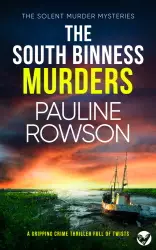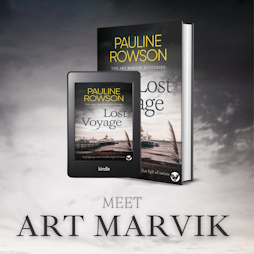
Being a crime writer involves researching some very gruesome things but also some very interesting forensic aspects of crime. I’ve researched gunshot wounds, death by crossbow, poisons (a favourite of Agatha Christie’s), blunt force trauma, suffocation, fire and more.
I am incredibly grateful to all the forensic scientists, Hampshire police officers and the Hampshire Fingerprint Bureau and crime scene investigators who have assisted me, especially Jonathan Smith, a senior forensic scientist and expert on blood patterns and spatter who helped me with THE SOUTH BINNESS MURDERS and the Art Marvik thriller LOST VOYAGE, plus others in the DI Andy Horton Solent Murder Mystery series.
 In THE SOUTH BINNESS MURDERS, I have blood on a boat stranded on the RSPB nature reserve island of South Binness in Langstone Harbour on the South Coast of England. There is no body on board. DI Horton has to establish how the blood got there, what happened to cause it? How badly would someone have been injured as a result of the blood droplets? Are they looking at murder? If so by what means and how many people would have been present.
In THE SOUTH BINNESS MURDERS, I have blood on a boat stranded on the RSPB nature reserve island of South Binness in Langstone Harbour on the South Coast of England. There is no body on board. DI Horton has to establish how the blood got there, what happened to cause it? How badly would someone have been injured as a result of the blood droplets? Are they looking at murder? If so by what means and how many people would have been present.
 In the Art Marvik mystery thriller LOST VOYAGE, a man is found murdered in Helen Shannon's bedsit in Eastbourne on the South Coast of England. Marvik working undercover for a police special investigations unit had met Helen on his first investigation for the unit. She says she overheard two men plotting a murder and now fears she’s being followed.
In the Art Marvik mystery thriller LOST VOYAGE, a man is found murdered in Helen Shannon's bedsit in Eastbourne on the South Coast of England. Marvik working undercover for a police special investigations unit had met Helen on his first investigation for the unit. She says she overheard two men plotting a murder and now fears she’s being followed.
Marvik thinks Helen is suffering from Post Traumatic Stress Disorder after her sister’s murder but soon changes his mind when her boss’s body is discovered in her flat with his throat slashed. So what can be told from the blood spatter around the body and the room? Is it possible Helen could have killed him? Are the patterns compatible with that? Could Helen have reached her boss's thoat, or would she have been overpowered by him before that? Was the man struck from behind, standing up, sitting down or lying down? All this makes relevant, thoughtful and exciting plotting!
Blood Pattern Analysts examine the size, shape, distribution and location of the bloodstains to form opinions about what happened at the scene of the crime. They assist investigators in answering questions such as:
• Where did the blood come from?
• What caused the wounds?
• What type of instrument was used?
• From what direction was the victim wounded?
• Was the victim standing, sitting, or lying on the floor?
• How were the victim(s) and perpetrator(s) positioned?
• What movements were made after the bloodshed?
• How many potential perpetrators were present?
• Does the bloodstain evidence support or refute witness statements?
Trained bloodstain pattern analysts can examine the blood evidence left at the crime scene and draw conclusions as to how the blood may have been shed. They can use photographs and diagrams to provide additional information about the crime scene.
From what may appear to be a random distribution of bloodstains at a crime scene, analysts can categorize those stains by gathering information from spatter patterns that help investigators in reconstructing the crime, corroborating statements from witnesses, and including or excluding potential perpetrators from the investigation.
It's a fascinating subject and, as I said, it makes for developing an intriguing storyline.
I'm grateful to Jonathan Smith, senior forensic scientist and Dr Carolyn Lovell, Crime Scene Management for all the help with the research for my crime novels.
Pauline Rowson lives on the South Coast of England and is the best selling author of many crime novels, published by Joffe Books. Her popular crime novels include the DI Andy Horton Solent Murder Mystery series, the Art Marvik mystery thrillers and the 1950s set Inspector Ryga mysteries. Subscribe to her newsletter for all the latest books news.